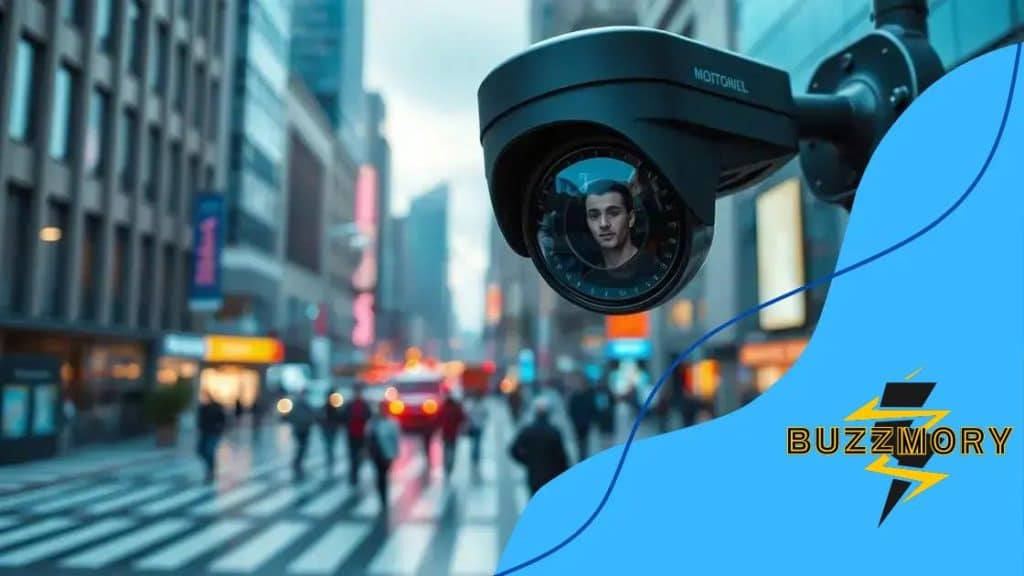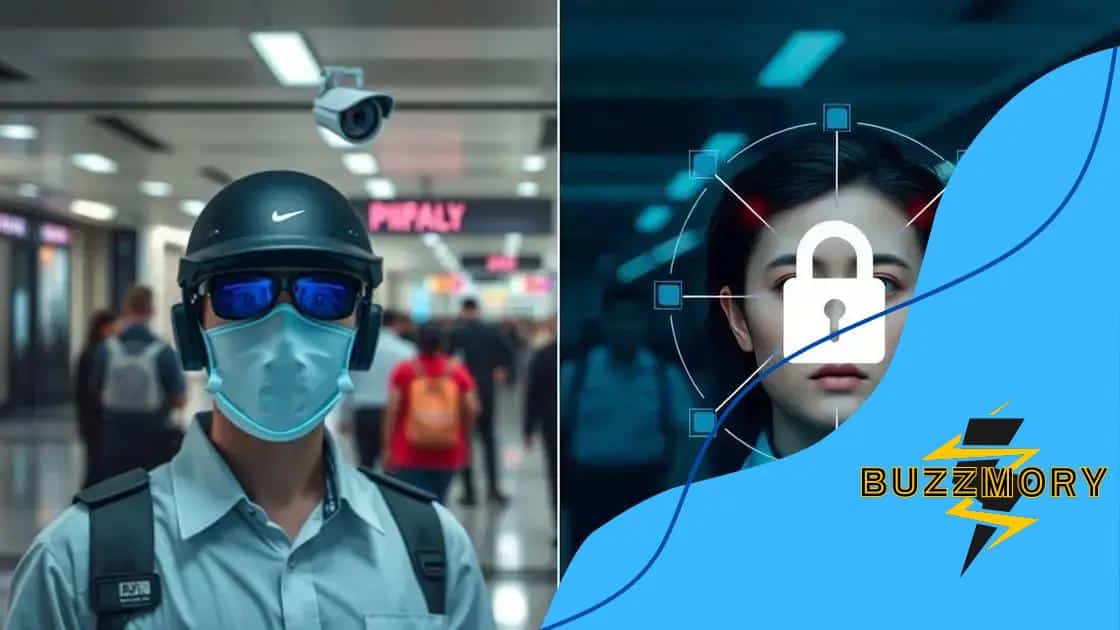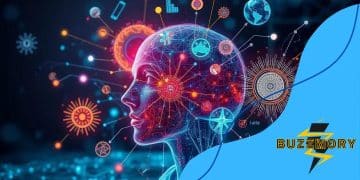The role of facial recognition in enhancing public safety

The role of facial recognition in enhancing public safety includes improved crime prevention, efficient identification in crowded areas, and the integration of technology to bolster security measures, while balancing ethical concerns about privacy and data usage.
The role of facial recognition in enhancing public safety is becoming increasingly relevant as technology evolves. Have you ever wondered how these systems change our perceptions of safety? In this article, we’ll explore the impacts and implications of using facial recognition in our daily lives.
Understanding facial recognition technology
Understanding facial recognition technology is crucial in today’s world. This technology uses algorithms to identify and verify individuals by analyzing facial features from images or video feeds. As a result, it’s transforming various fields, particularly in enhancing public safety.
How It Works
Facial recognition systems operate by comparing a detected face to a database of faces. When a person’s face is captured, the system converts it into a numerical code. This code is then matched against the stored codes in the database.
Key Components
- Image Capture: Devices like cameras capture the images.
- Feature Extraction: Unique facial features are analyzed.
- Matching Process: The extracted features are compared to database entries.
As this technology advances, it enhances the accuracy of identifying individuals. Importantly, its applications span from security to personal device unlocking.
Furthermore, understanding the implications of facial recognition is essential. Privacy concerns arise as people worry about surveillance and data misuse. Striking a balance between security and personal privacy is a growing debate in society.
Applications in Daily Life
Facial recognition isn’t just in security systems. It is also utilized in airports for boarding passes, social media for tagging photos, and even in retail for personalized customer experiences.
As awareness of facial recognition technology grows, so does its impact on our daily lives. Engaging with these systems prompts questions about safety, freedom, and trust. The future may see more advanced systems with better accuracy and privacy safeguards.
Applications of facial recognition in public safety
The applications of facial recognition in public safety are vast and continually evolving. This technology plays a significant role in law enforcement, helping to identify suspects and prevent crime.
Enhanced Security Measures
Facial recognition systems are increasingly implemented in crowded places, such as airports, stadiums, and public events. They enhance security by monitoring individuals’ movements and alerting authorities about potential threats.
Identification of Criminals
- Real-time Monitoring: Facial recognition allows for the instant identification of wanted individuals.
- Evidence Collection: Captured footage can serve as crucial evidence in investigations.
- Patrol Assistance: Officers can receive alerts on suspects as they enter monitored areas.
This technology aids police in maintaining order and enhancing safety in communities. As systems improve, the accuracy and speed of identification increase, making it easier for law enforcement to respond swiftly.
Another key benefit is its ability to track missing persons. Facial recognition can identify those on missing persons lists, assisting in reunions and bringing loved ones back home. This humane application of technology highlights the advantages it offers beyond crime prevention.
Public Acceptance and Usage
While the advantages are significant, public acceptance remains a topic of discussion. Many people worry about privacy violations and the potential for misuse of data. An open dialogue about how this technology is used is essential to foster trust among the public.
Overall, the applications of facial recognition in public safety showcase its value in promoting security. However, balancing its benefits with ethical considerations will shape its future.
Benefits and challenges of facial recognition systems

The benefits and challenges of facial recognition systems create a complex landscape in today’s technology-driven world. On one hand, these systems enhance security and improve efficiency in various sectors.
Benefits of Facial Recognition
One significant advantage is the increased safety in public spaces. By quickly identifying individuals on watch lists, authorities can prevent potential threats. In addition to enhancing public safety, facial recognition can simplify identification processes in everyday scenarios.
- Fast Identification: Users can gain access to services instantly by recognizing their faces.
- Reduced Crime Rates: Criminals may think twice when they know they are being monitored.
- Data Collection: Businesses can gather valuable data to enhance customer experiences.
These benefits contribute to a more secure environment while providing essential insights for businesses.
Challenges Faced
Despite the advantages, there are considerable challenges to address. Privacy concerns dominate discussions, as people fear constant surveillance. This raises questions about consent and data protection. Furthermore, facial recognition is not always accurate, leading to false positives.
For example, innocent individuals may be misidentified as criminals, causing unnecessary distress. The technology’s effectiveness can vary based on factors like lighting and angle, affecting how well it can recognize faces.
Another critical issue is the potential for discrimination. Studies have shown that some systems are less accurate for people with darker skin tones, which can reinforce societal biases.
Balancing the benefits with these challenges is crucial. Ongoing dialogue about regulations and ethical standards will guide how these technologies develop in the future.
Legal and ethical considerations
The legal and ethical considerations surrounding facial recognition technology are critical in shaping its future. As this technology expands, so do concerns about privacy, consent, and data security.
Privacy Issues
One of the foremost issues is the potential invasion of privacy. Many individuals feel uneasy knowing that their faces can be captured and stored without their consent. This highlights the importance of understanding how data is collected and used.
- Consent: Individuals should have the right to be informed when their data is being collected.
- Data Storage: Clarity on how long facial recognition data is retained is essential.
- Transparency: Organizations must be open about their usage of this technology.
Addressing these concerns is imperative to build trust with the public and avoid backlash against surveillance systems.
Regulations and Standards
In many areas, laws are being developed to govern the use of facial recognition systems. Governments and organizations alike are discussing regulations that dictate how this technology can be used responsibly. This includes guidelines for law enforcement and private businesses.
There is a growing call for standardizing how facial recognition systems operate to ensure fairness and accountability. Without established norms, there’s a risk of abuse or misuse of data, leading to discrimination or wrongful accusations.
Furthermore, the ethical implications cannot be overlooked. Considerations about how this technology impacts marginalized communities are essential. If facial recognition systems are less accurate for certain demographics, they can perpetuate existing biases.
Thus, it is critical to navigate the complex intersection of technology and ethics, ensuring that advancements in facial recognition enhance society rather than hinder it.
The future of facial recognition in security
The future of facial recognition in security promises to transform how we approach safety in public and private spaces. As technology continues to advance, we can expect more sophisticated systems that enhance security measures.
Advancements in Technology
Future facial recognition systems will likely utilize better algorithms, leading to improved accuracy. These advancements may reduce false identifications, allowing for more effective use in law enforcement and border security.
Integration with Other Technologies
Another trend is the integration of facial recognition with other technologies. For instance, combining it with artificial intelligence can offer predictive analytics for crime prevention. By analyzing patterns, law enforcement can respond proactively to potential threats.
- Smart City Initiatives: Cities may adopt facial recognition to boost safety measures.
- Enhanced User Experiences: Businesses can create smoother service experiences using facial recognition for payments and access.
- Increased Surveillance: Monitoring public areas may become standard practice to enhance security.
As these systems evolve, they will integrate seamlessly into our daily lives, raising both opportunities and ethical concerns.
Public Opinion and Regulation
The public’s acceptance of facial recognition will play a crucial role in its future. People want assurance that their privacy is protected while benefiting from enhanced security. This calls for thoughtful regulations that govern the responsible use of facial recognition technology, ensuring it serves society positively.
Future developments should consider ethical implications and focus on both safety and privacy rights. Communities must engage in discussions about implementing strict guidelines, encouraging transparency in usage.
Ultimately, the trajectory of facial recognition technology in security relies on balancing innovation with ethical considerations. By doing so, society can harness its benefits while protecting individual rights.
In conclusion, the future of facial recognition technology in security holds significant promise. As this technology evolves, it offers increased safety and efficiency. However, it also brings crucial challenges regarding privacy and ethics. By striking a balance between innovation and safeguarding individual rights, we can harness the benefits of facial recognition while addressing the concerns that come with it. Engaging in open discussions and setting clear regulations will be key in shaping a responsible future for this powerful technology.
FAQ – Frequently Asked Questions about Facial Recognition in Security
What are the main benefits of facial recognition technology in security?
The main benefits include enhanced safety in public spaces, rapid identification of individuals, and improved crime prevention.
What challenges does facial recognition technology face?
Challenges include privacy concerns, potential for misidentification, and ethical issues related to surveillance and discrimination.
How can facial recognition technology impact daily life?
It can streamline processes like airport security, access control, and personalized customer experiences in retail.
What should be done to ensure ethical use of facial recognition?
Establishing clear regulations, ensuring transparency, and engaging in public dialogue about privacy rights are essential for ethical use.





